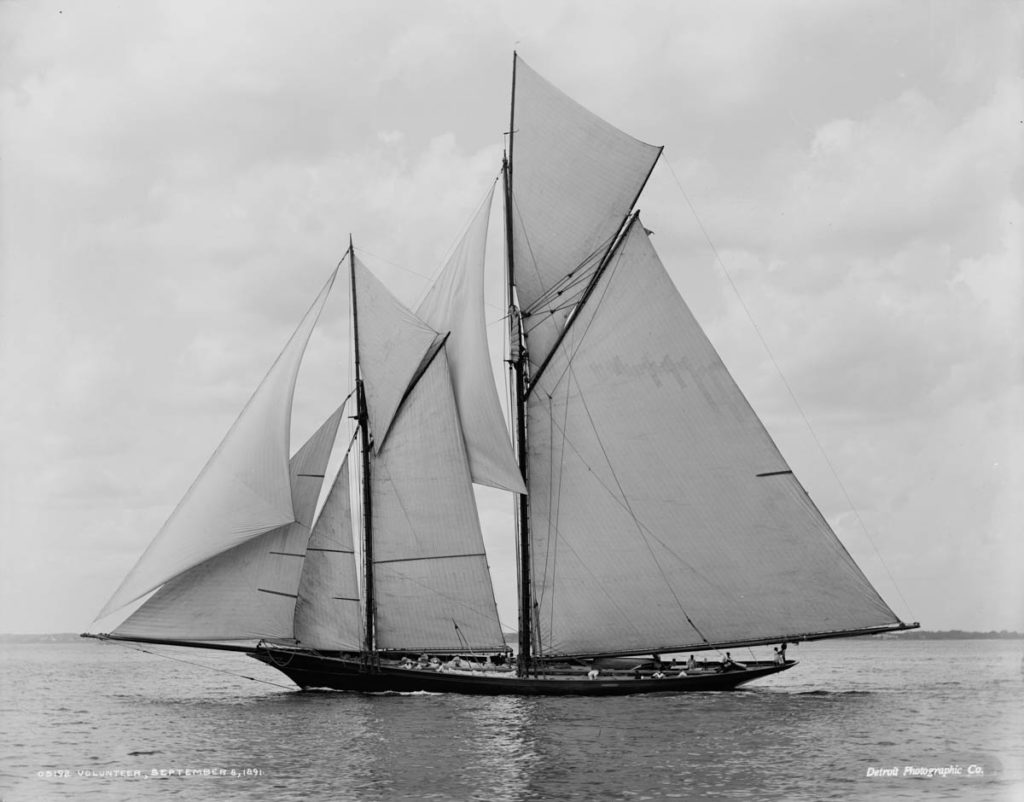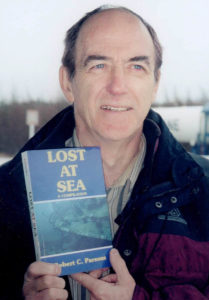
With more than 20 books of Newfoundland sea stories to his credit, Robert C. Parsons may know as many facts and anecdotes about this province’s marine history as anyone, and probably more. The retired teacher from the South Coast town of Grand Bank has been writing seriously since 1987 on various historical subjects, but he is best known for his shipwreck tales involving Newfoundland sailing vessels. He has now reached a writer’s enviable position of having people who share his interest send him a steady stream of ideas and information. With this network, it seems that Robert Parsons could keep writing indefinitely about our sailing ships of yesteryear.
Fishing and seafaring around Newfoundland a century and more ago were fraught with danger, and Robert has both a wealth of material to draw from and an audience hungry for it. The sea was a way of life for nearly everybody’s grandfather and families generally in the first half of the 20th Century, he explains. A great many people can relate to these tales, and he takes pains to personalize them, including crew and family names whenever possible. There have been about 60,000 of his books purchased by eager readers. Although he has no idea how it ranks among all Newfoundland-published books, Robert believes it is high.
After writing his first two books he compiled a map of all the shipwrecks covered in them and the total exceeded 500, and that listed just South Coast schooners. “There are estimates of thousands of wrecks along Newfoundland’s shores, and I am beginning to think I have only scratched the surface after writing about nearly three thousand shipwrecks in my books.”
Marine historical themes come naturally to Robert Parsons. “My father Charles was a seaman all his life and was shipwrecked once, on the Mary D. Young, at the entrance to St-Pierre harbour in November, 1918.” Charles went on to serve as cook on foreign-going schooners, banking vessels and draggers. “So you see, I am the son of a sea-cook.”
Add that to the fact that Grand Bank was, some believe, the third largest Atlantic coast fishing community after Gloucester, Massachusetts, and Lunenburg, Nova Scotia, and “I guess the feeling for wooden sailing ships was instilled in me.”
Parson’s interest focuses mainly on the period from the 1880s to 1970s and involves vessels in the fishery of Newfoundland and Labrador. His subjects reflect his South Coast heritage which was primarily fishing, but he does not exclude other marine topics that occurred elsewhere in this region. “For example, the first story in one of my books…is of 20 people marooned on an icepan north of Newfoundland for six months. Finally, a Newfoundland sealing vessel happened by and found them. Incredible! And the book is full of stories like that.”
He also has ventured into Nova Scotian waters, after finding in his research enough information for a book (“In Peril on the Sea”) about that region. “That material, combined with the stories of Nova Scotia vessels lost on Newfoundland shores…was nearly enough for a book. What topped it off was several visits to Nova Scotia archives where I collected other tremendous stories.” Another book he has written about the Maritimes is “Shipwrecks of New Brunswick.”
One of Robert’s works is “Ocean of Storms, Sea of Disaster” which tells of strange and unique wrecks in the North Atlantic (other than the Titanic and Lusitania). Still with the unusual, he is publishing “Any Strange News? True stories behind the headlines” which are sea stories of this province interspersed with curious news items of the day. Going beyond the printed word, he now has produced a professional CD with stories of survival and loss at sea in this province, with background music by Sim Savory, formerly of the Newfoundland band SIMANI.
Careful research is obviously essential in these subjects. Scouring archives and libraries for information are primary steps. Having exact dates is easier than searching “two or three whole years of archival papers — The Daily News or Evening Telegram — to find it. A daunting task.” Having developed efficient methods, he now usually knows where to look for specific subjects which speeds the research along, although the process is still time consuming.
His network of readers and marine enthusiasts, both within the province and beyond, also keeps him supplied with leads and information for stories. The Internet, guest interviews on radio, and articles like this one help keep him and his readers in touch. Robert also issues a regular newsletter about his work here. “So many people away from Newfoundland have given me leads to sea mysteries and, between us, often the story or mystery is solved or the tale is written. I am never too busy to answer contacts who write or email…I give this message to any and all: Send me your stories or lead me to them.”

How did it all begin? Robert Parsons knew of a list of about 300 schooners once owned in Grand Bank which gave the ship’s name and owner. About 30 had additional comments telling the vessel’s fate. “I thought at the time ‘What a shame that all these ships were lost and lives were lost with them, and not much has been recorded’.” He began the painstaking spare-time task of learning what had happened to the rest of those ships. Some had been burned while others had been beached, sunk, wrecked or abandoned in mid-ocean. He first put all this information on index cards, then wrote it up on paper. Some stories were short while others extended to two or three pages.
In 1988-89 he connected all the stories chronologically with lead-in information between them. The result was about 400 typed pages which he sent to a friend for advice on publishing the work. He thought it could be two books, so Robert went looking for a publisher. He eventually signed on with Creative Publishers of St. John’s which produced “Lost at Sea, Volume One” in 1991 and Volume Two the next year.






